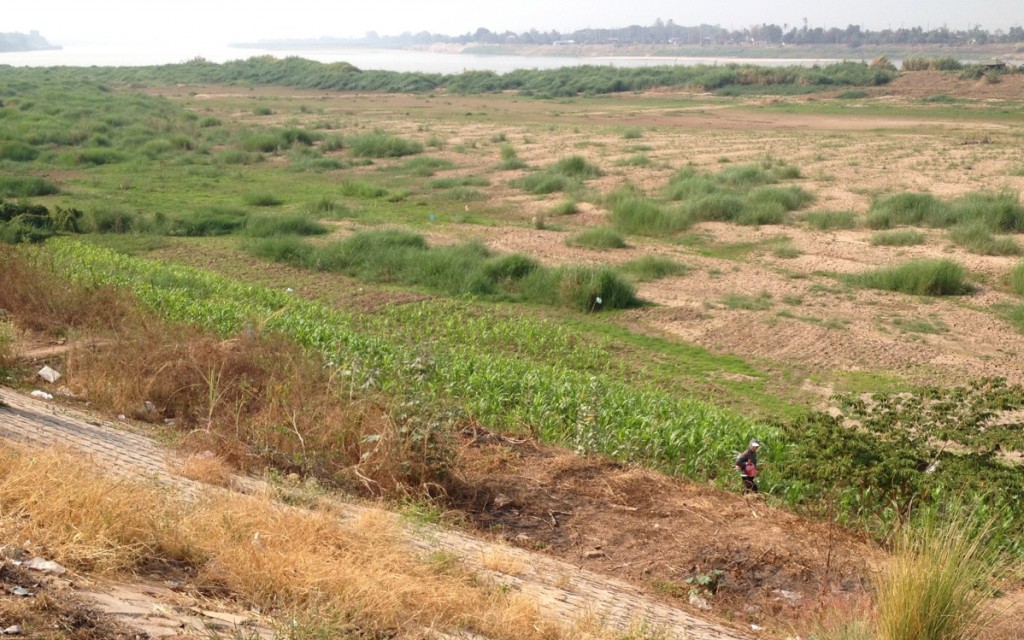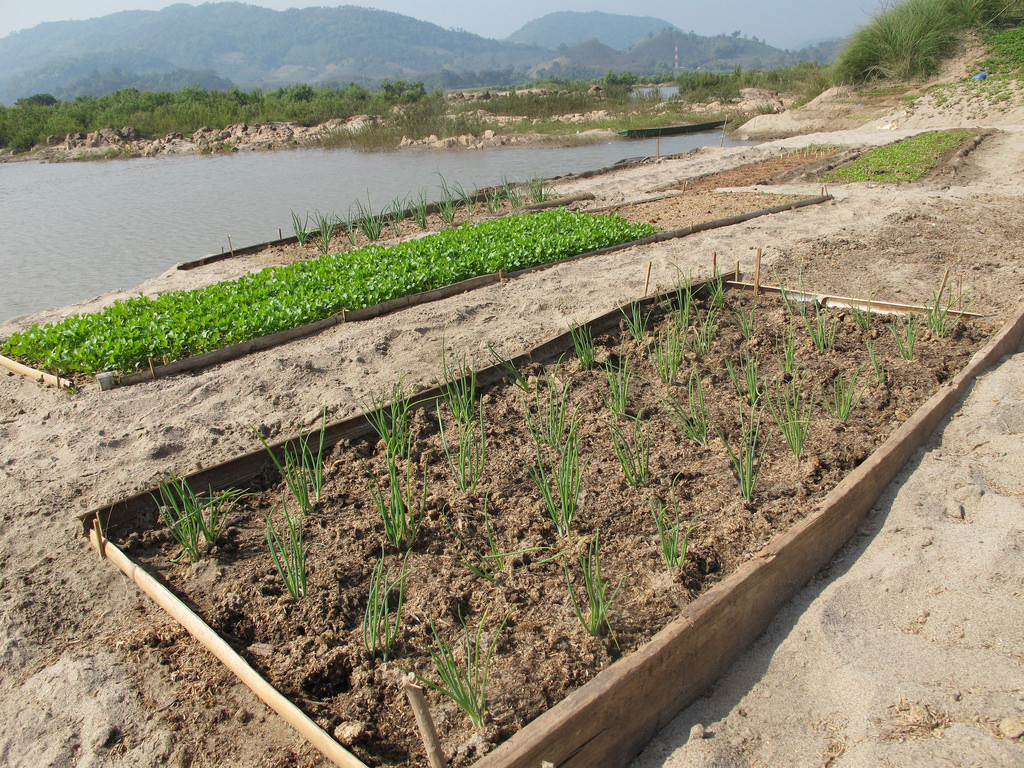Wednesday March 19, 2014
The months of March and April are the height of the dry season in Laos. No rain breaks the persistent heat and the air is hazy with sun and dust. During this time, the Mekong River is at its lowest water level of the year, shrinking to a fraction of its former self and exposing vast tracts of sandy bank. This dry period of low water is one of two distinct faces of the river that change with the seasons. It contrasts sharply with the wet season of May to October, when the river floods in the rainy monsoons and swells its banks.
 Though this contraction of water might seem dire, both the wildlife and people of the Mekong have adapted to the seasonal pulse of water that dramatically rises and falls over the course of the year (see Life afloat). One sign of this cyclical lifestyle is the riverside gardens that sprout up along the fertile riverbank soil when the waters recede. People plant these gardens with crops like corn and potatoes, onions and herbs. Gardens are a common feature of village life (top photo), and an important source of supplementary food. They can even be found along the riverbank in the capital city of Vientiane at this time of year (lower photo). This dynamic culture of planting is accustomed to the swelling and shrinking of the river. However, changes to the natural rhythm of the water through the construction of water infrastructure can flood gardens out of season, and alter this long ingrained way of life.
Though this contraction of water might seem dire, both the wildlife and people of the Mekong have adapted to the seasonal pulse of water that dramatically rises and falls over the course of the year (see Life afloat). One sign of this cyclical lifestyle is the riverside gardens that sprout up along the fertile riverbank soil when the waters recede. People plant these gardens with crops like corn and potatoes, onions and herbs. Gardens are a common feature of village life (top photo), and an important source of supplementary food. They can even be found along the riverbank in the capital city of Vientiane at this time of year (lower photo). This dynamic culture of planting is accustomed to the swelling and shrinking of the river. However, changes to the natural rhythm of the water through the construction of water infrastructure can flood gardens out of season, and alter this long ingrained way of life.

